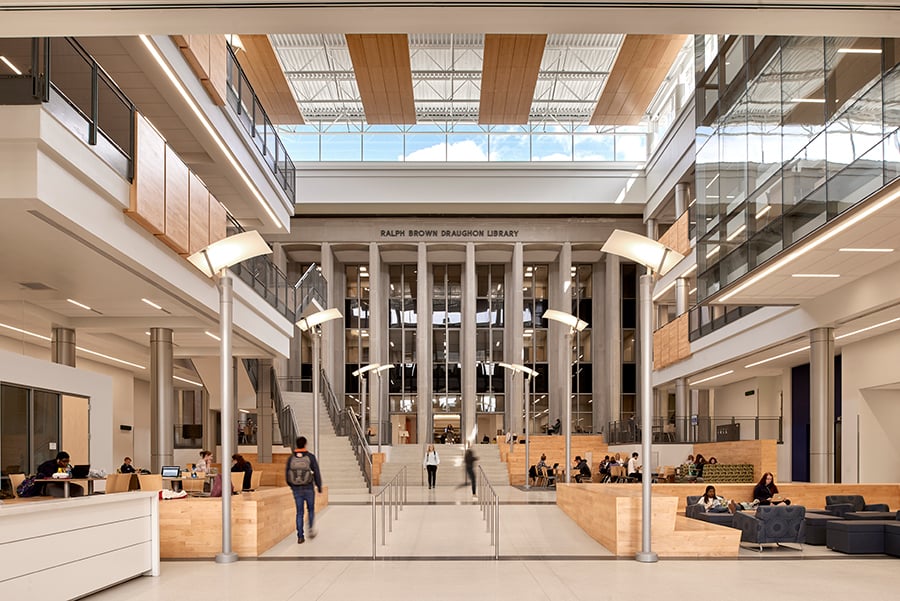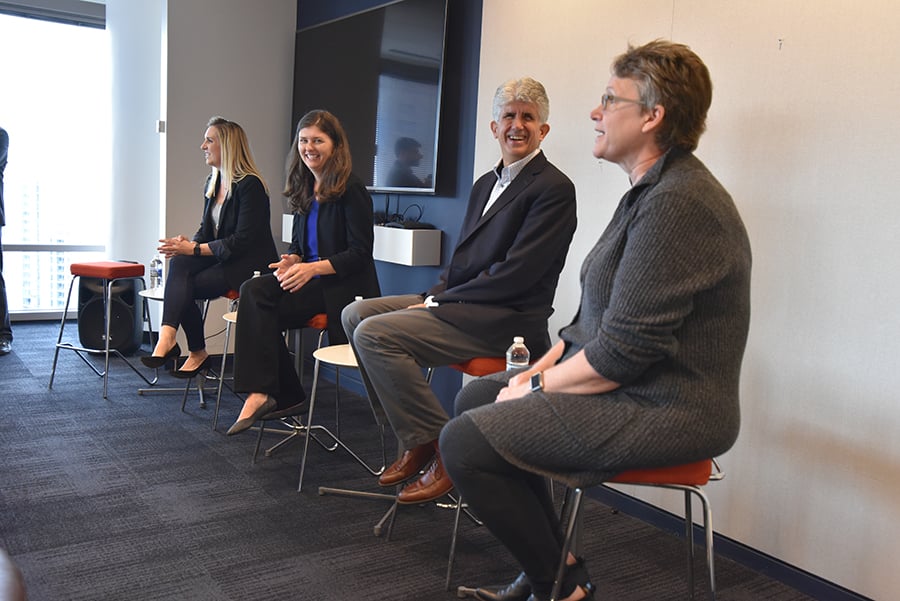
January 18, 2019
How Designers Can Address the Evolving Needs of Educators
A Metropolis Think Tank panel at Atlanta-based tvsdesign delved into the resources that are crucial to a well-rounded teaching and learning experience.

When it comes to teaching and learning, one size does not fit all. That was the theme of a panel discussion convened at the offices of the Atlanta-based architecture firm tvsdesign in early November. The subject at hand: How do designers address the challenges of crafting a space conducive to educational opportunities?
Not only did the panelists dig into the architectural aspects of design, but they also interrogated wider aspects of education. What resources are crucial to a well-rounded teaching and learning experience? How have educational methods and environments changed in recent years?
Ande Noktes, the leader and founder of northeast Atlanta’s Midtown International School, noted that the classrooms of old, with their uniform rows of desks, are disappearing. Moreover, cookie-cutter lectures are fast becoming a thing of the past, as teachers shift to more hands-off approaches.
In Noktes’s third-grade science class, for example, students don’t flip through textbooks to learn about cells. Instead “we have students watch a short news clip about the cholera outbreak, and they get super excited and [then] super upset about all these people dying,” she said. Now invested in a real-world problem, students cooperate to find ways to address the epidemic.

How to define success when building these institutions, however, can be fickle business, in part because of what tvsdesign principal Gary McNay called “backwards metrics,” such as the outmoded method of evaluating how much square footage students need to learn. For Noktes, many designers don’t understand the difference between building a classroom fit for 12 students and building one for 16.
Continuing to use such measurements, said McNay, is short-sighted. Designers should be thinking of where today’s students will be in 10 or 15 years. Understanding where students end up after graduation provides a better testament to the success of schools than graduation rates or test scores, he asserted.
But what modern educational design looks like depends on factors such as geography, types of students—a middle schooler and a college student learn differently—and the financial, environmental, and technological resources available.
In many ways, architecture can be alluring for students, Noktes said. The rounded accents in one of her institutions, she said, encourage curiosity. “I can’t help it; I just want to go around the curve and see what’s there,” Noktes quoted one young student as saying.
McNay went further, suggesting that designs can bring students and teachers together in ways that are often overlooked. “Students are actually shy about knocking on teachers’ doors,” he said; he noted that schools where transparent offices and open doors hold sway enjoy higher grades and graduation rates.
But, said panelist Laura Shue, a tvsdesign senior associate, redesigning modern classrooms necessitates remodeling teaching methods. At Auburn University’s new Mell Classroom Building, educators had to adapt to “active learning,” which includes how students use the environment outside lecture halls to enhance educational experiences. Sometimes that means bringing green space or other unconventional study spots to an institution.
Despite all these advances in design—architectural and scholastic—some aspects of old-school institutions should be preserved. With the growing presence of technology in schools, some designers have predicted libraries will disappear. But for many, there’s something cathartic about squatting between bookshelves to trade notes or read a book.
Figuring out what parts of new designs are working, said tvsdesign principal Teresa Edmisten, is a matter of observation. “There’s nothing better than taking a low-performing anything and making it shine,” she said. In effect, designing educational institutions is purely a learning experience.
The Think Tank discussions were held on November 7 and 8, 2018, in Atlanta. The conversations were presented in partnership with Dormakaba, DXV/GROHE, DWR Contract, Lutron, Sunbrella Contract, and Wilsonart.
You may also enjoy “Ennead Designs Sustainable Home for Stanford’s New Knight-Hennessy Scholarship Program.”





